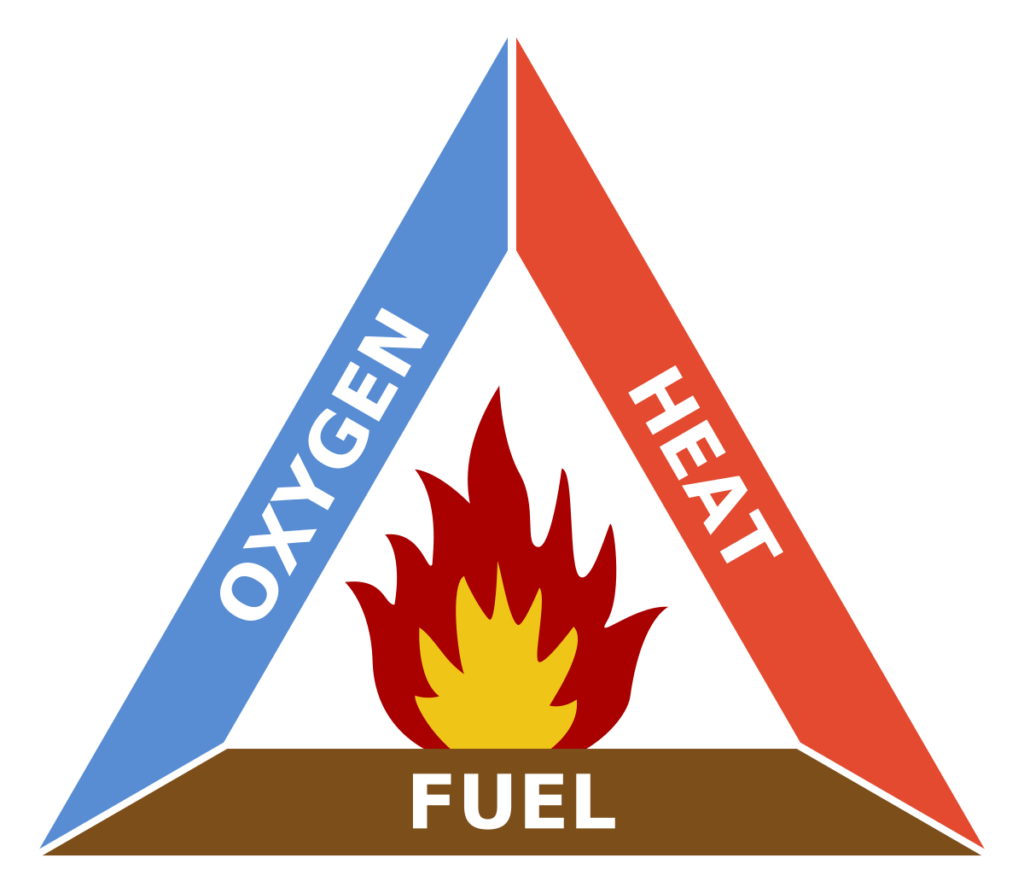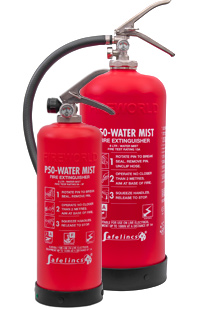Thursday 5th April 2012
What is the fire triangle?
The fire triangle is made up of three elements, which are the three components needed for a fire to start and burn: fuel, oxygen and heat. Removing one of these elements will prevent the fire from spreading and causing irreversible damage. Fire protection equipment will help you and your staff break the triangle, reducing potential risks of damage to a building or loss of life.

The three elements of fire explained
Heat
Heat must be present for a fire to ignite. Flammable materials constantly release flammable vapours, where heat is present, these vapours will ignite and start to burn.
Once a fire has started, heat from the fire will dry and remove moisture from surrounding materials (fuel), which results in the fire spreading.
Fuel
A fire needs fuel to burn and feed it. Fuel can be in the form of any combustible material such as paper, wood, textiles, oil, liquids etc. Removing the fuel will prevent a fire from spreading or starting in the first place.
Oxygen
Without oxygen, a fire cannot ignite and continue to burn. Oxygen is all around, making this one of the most significant factors of the fire triangle.
How does fire safety equipment break the fire triangle?
Installing fire safety equipment, such as fire extinguishers and fire blankets, can help stop a small fire from spreading. Fire blankets deprive the flame of oxygen by covering it, killing the fire.
Many fire extinguishers, such as foam and water fire extinguishers, work in the same way; either by covering the flame and its fuel to remove oxygen, or by cooling the fire and any nearby fuel, reducing the risk of the fire spreading. Water Mist fire extinguishers deploy a cooling mist, and are safe to use on live electrical equipment up to 1000V, making them an ideal extinguisher for businesses, education, hospitality and the care sector.
Although fire safety equipment can be a useful tool in stopping a small fire from spreading, a fire should only be tackled if staff are trained to use them, and are confident in what they are doing.

Fire Safety Training Courses
To prepare your staff to effectively extinguish fires, there are a variety of on-site fire safety training courses available. This includes fire safety awareness and fire warden training, as well as evacuation training to ensure that staff can escape to a place of safety until the fire is under control. These training courses will not only reduce the risk of a fire breaking out on your premises by enabling staff to reduce the risk of fire in their daily duties, but also improve responses and outcomes in the event of a fire.
Preventing a fire from starting in the first place is always the best form of fire safety. Encourage staff to keep an eye out for potential causes of fire, such as faulty electrical equipment or hazardous materials, and use flammable liquid storage cabinets to reduce the risk of these flammable liquids igniting.

Employers are required by law to ensure that all employees receive adequate fire safety training. Employers must also provide adequate equipment, such as evacuation chairs and evacuation sheets, to ensure everyone in the building can safely evacuate.
For more information about the best fire safety equipment for your business, or to arrange a site survey, contact us today.
FAQs
Q. What element of the triangle does a fire blanket remove?
A. Fire blankets suffocate the flame, removing oxygen from the fire.
Q. What do foam extinguishers remove from the triangle?
A. Foam extinguishers work in multiple ways to fight fire – the foam spray covers the flame and its fuel to remove oxygen, while also cooling the flame to extinguish it.
